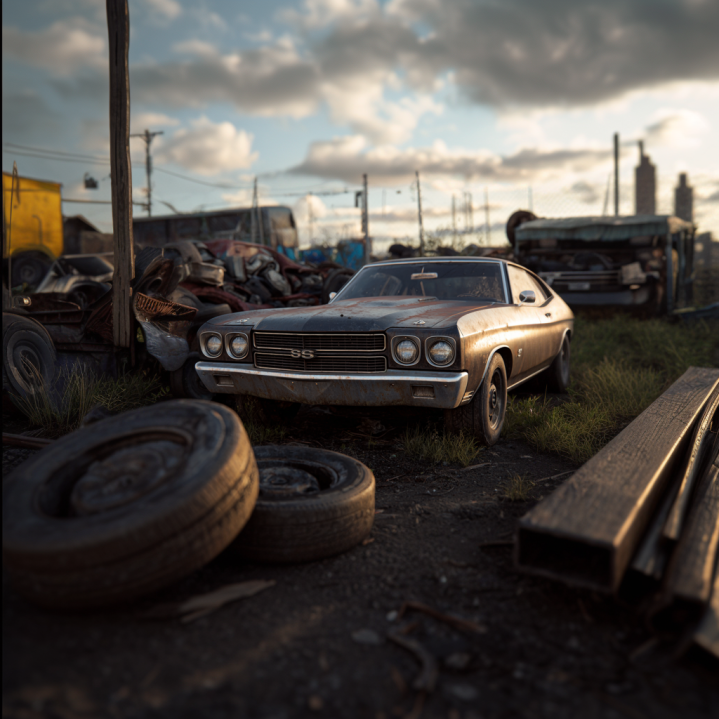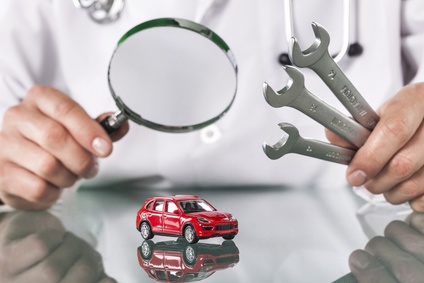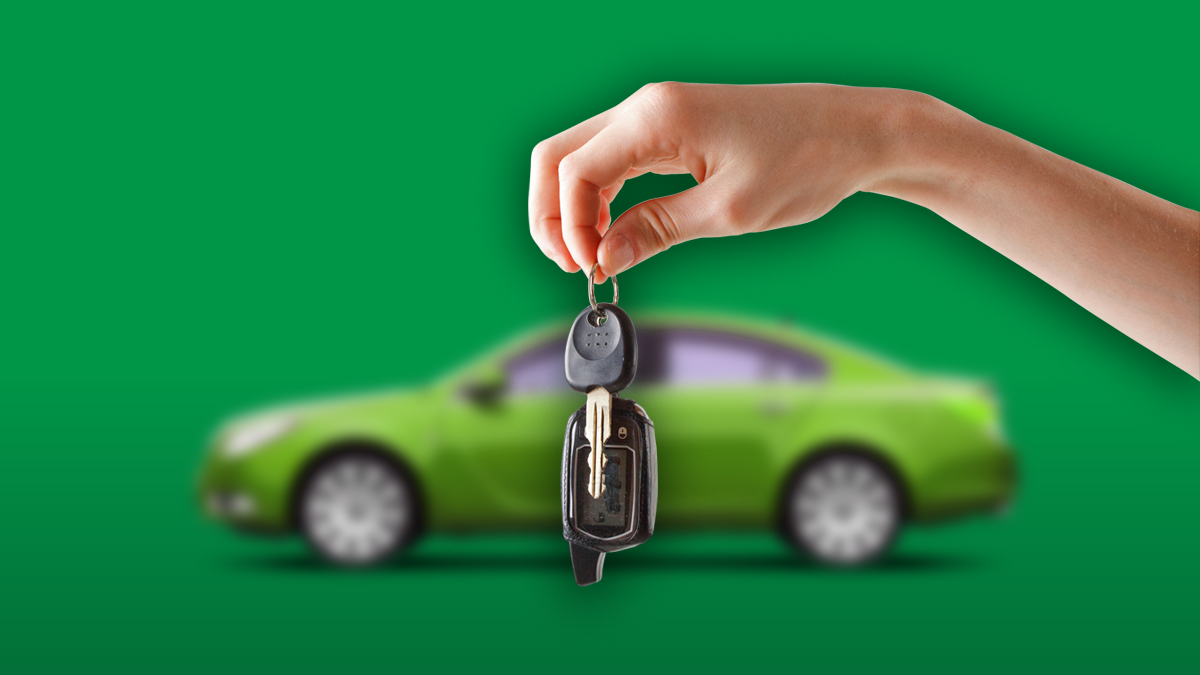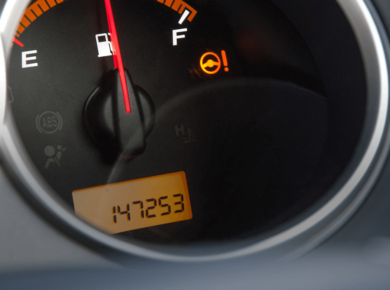Shopping for a used car is one of those experiences that can be both exciting and a little stressful. You’ve got endless options, plenty of money to save compared to buying new, and maybe even the thrill of finding a hidden gem. At the same time, there’s the risk of driving home with something that turns out to be a problem car.
I’ve been through the process myself more than once, and I’ve also watched friends make both great and not-so-great decisions. What I’ve learned is this: if you want to know how to buy a used car, the most important thing is spotting the warning signs before you sign anything. You don’t need to be a mechanic or a car expert, but you do need to know where people often get tripped up.
So let’s go through the five biggest red flags to look for when buying a used car. These aren’t just minor details – they’re the things that can either save you thousands or cost you far more than you planned.
Red Flag One: A Salvage Title
The first time I heard the phrase “salvage title,” I didn’t fully understand what it meant. Basically, it’s the official way of saying a car has been written off by an insurance company, maybe because of a huge crash, maybe because of flood damage, or even fire. The car might look fine after being fixed up, but the truth is you can’t always see the real issues until later.
Yes, cars with salvage titles are cheaper. Car prices drop a lot in these cases, which is why some buyers get tempted. But you also lose the chance to get an extended warranty, and when you go to resell, you’ll find far fewer people interested.
The simplest way to avoid the trap is to check the car’s history with its VIN-number. That will tell you if it’s ever carried a salvage title. Ask for service records, too. If a seller hesitates or gives you half-answers, trust your gut. In my opinion, unless you’re deliberately looking for a project car, a salvage title is a deal-breaker.
Red Flag Two: Mileage That Doesn’t Match
Mileage is one of those details that sounds simple but can be deceiving. An odometer reading should give you a clear idea of how much life the car has left. But sometimes, the numbers don’t tell the whole truth.
I once looked at a car that supposedly had under 40,000 miles. Inside, the seats were cracked, the steering wheel looked like it had been through a war, and the pedals were almost worn down. It didn’t add up. And sure enough, a bit of digging showed inconsistent readings over the years.
Odometer fraud is illegal, but it still happens. The safest move is to compare the mileage against maintenance records or inspection logs. If you see oil change receipts every 5,000 miles, you should see the mileage go up steadily. If it doesn’t, that’s suspicious. Some people also check Kelley Blue Book to see what typical mileage looks like for cars of the same year and model.
When in doubt, assume that inconsistent numbers mean you’re not being told the full story. It’s one of the classic red flags when buying a used car.
Red Flag Three: No Paper Trail
Here’s something most people don’t think about until they’re already standing in someone’s driveway: paperwork. A well-kept car usually has at least some kind of paper trail: oil change receipts, brake service invoices, maybe a logbook with stamps from a garage.
I’ve seen buyers get talked into cars with zero records, and more often than not, they end up with repair bills later. Without maintenance records, you have no proof that routine work was done. Maybe the oil was changed regularly, maybe not. Maybe the brakes are overdue, maybe not. You’re taking a gamble.
This is especially tricky when buying from a private seller, because sometimes they just lose the paperwork over time. But if someone shrugs and says “I don’t have anything,” I’d be very cautious.
That’s where a VIN report helps. Services like ClearVin can sometimes show you service visits or at least give you information about the previous owner. It doesn’t replace receipts, but it’s far better than going in blind.
Red Flag Four: Rust and Water
Not every danger shows up in the documents. Some problems, like rust or flood damage, you can only find by looking closely.
Rust is sneaky. It starts as little flakes around wheel wells or under the car, and before you know it, the frame or brake lines are compromised. Flood damage is even worse. Water ruins electronics, corrodes metal, and often leaves a damp smell that never really goes away.
I once helped a friend check out a used SUV. On paper, it looked perfect. In person, we pulled up the carpet in the trunk and found sand and water stains underneath. The seller swore it was just from “a spilled cooler.” Maybe, but more likely, it had been through a flood.
When making a ‘buy a used car’ checklist, always include a hands-on inspection. Look under carpets, peek under the hood, smell the interior. If something feels off, it probably is. And remember, cars that lived in flood-prone states deserve extra scrutiny. Read more about how to spot flood damage in our article.
Red Flag Five: The Evasive Seller
Last but not least, watch the seller as much as you watch the car. In my experience, this is where instincts really matter.
A good seller, dealer or private, will answer questions, provide documents, and even encourage you to check the car out thoroughly. A bad one will dodge questions, refuse to give you the VIN, or pressure you to make a quick decision. That’s when the alarm bells should go off.
This applies just as much if you’re doing online car buying. When you buy a used car online, listings should have detailed photos, mileage, and history. If you’re chasing down basic details or getting vague answers, it’s a sign to move on.
Don’t be afraid to ask things directly. Why are you selling the car? Can I see the records? Can we arrange for a mechanic to check it? If the answer to any of those is “no,” walk away. There are always other cars purchased every day, and no single deal is worth the risk.
Putting It All Together
If you’ve been keeping track, the five big warning signs are salvage titles, mileage that doesn’t make sense, missing records, hidden rust or flood damage, and sellers who don’t give straight answers. These are the things to check while buying a used car that can make or break your decision.
So what’s the best way to buy a used car? For me, it’s a mix of preparation and patience. Start with research. Use car prices online to see what’s fair. Make a checklist so you don’t forget the small stuff. Then, when you see a car in person, take your time.
For people planning to buy a used car online, the rules are similar. Stick with platforms that verify sellers, and always insist on a VIN report. Whether it’s a car from a private seller or a dealer, the process doesn’t change much: check the car, check the paperwork, and check the honesty of the person selling it.
Extra Thoughts for Buyers
I’ll leave you with a few smaller buying used car tips that can also make a big difference:
- Always compare multiple cars for sale before deciding.
- Bring a friend along – it’s surprising how a second pair of eyes can catch something you missed.
- Don’t be shy about asking what to look out for when buying a used car if you’re unsure. Mechanics and even experienced friends are often happy to help.
- Consider an extended warranty if you’re buying from a dealer. Sometimes, peace of mind is worth the cost.
- And if something feels rushed or pressured, that’s usually your sign to slow down.
These little steps add up. Over time, they save you money and help you avoid frustration.
How ClearVin Helps
No matter how sharp your instincts are, there’s only so much you can see on your own. That’s why I always recommend running a VIN report before making a decision. With ClearVin, you can confirm odometer readings, title history, service records, and even spot things like salvage title or flood damage.
If you’d like to see what one looks like, here’s a sample ClearVin report. It’s quick, affordable, and a smart step if you want to buy used cars with confidence.
Final Word
Learning how to buy used cars takes a little time, but it doesn’t have to be overwhelming. As long as you know the red flags and you’re willing to walk away when something feels wrong, you’ll avoid the biggest pitfalls.
Whether you’re planning to buy a used car online, head to a dealership, or meet someone selling privately, the core advice stays the same: check the title, confirm the mileage, ask for records, look for signs of damage, and pay attention to the seller.
Follow these tips for buying a used car from a dealer or from private sellers, and you’ll be far more prepared to buy a used car you can trust. At the end of the day, buying a used auto shouldn’t feel like a gamble – it should feel like a smart step forward.









